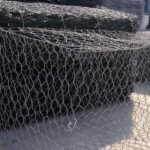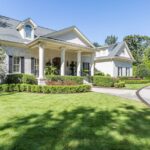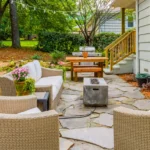Timber cladding is an effective way of protecting a house or building from environmental factors. The process involves installing individual timber planks or pieces on the exterior so as to support the structural integrity of the house or building. If done professionally, timber cladding also contributes to aesthetics, adding a decorative element. Timber cladding is available in many different types like glulam hardwood beams, and high opacity cladding. Common timber species include western red cedar and rosewood.
Benefits
1. Installation

Timber is a lightweight material which simplifies the installation process significantly. Individual planks are easier to handle and can be attached to exterior walls conveniently. Thus, the entire project can be finished faster than other similar projects.
2. Cost Effective
Timber cladding is more economical than other alternatives and it offers an array of benefits. The simple installation process also plays a role in driving down costs. Plus, timber plays a role in maintaining comfortable temperatures, which also reduces your electrical bills.
3. Durable
If properly maintained, timber cladding can last for years. As it is resistant to environmental factors, the material protects the structure of your home for prolonged periods. Chips and scratches are also less apparent because of the grain patterns, and hence, timber cladding is also aesthetically appealing. Moreover, the durability can be improved further with specialized treatments and finishing options.
Generally, Douglas fir and western red cedar are more durable than other timber claddings.
4. Energy Efficient

Timber is an insulative material and has low thermal conductivity. This reduces the energy consumed by your heating and cooling system because it becomes easier to regulate and maintain temperatures inside the house. Not only does this bring down your energy bills, but also sustains natural resources on earth.
5. Versatile
Timber cladding is available in several different types, styles and designs. Plus, it can be flexed depending on the project or application. Complementing well with various architecture styles, wood cladding is flexible and scalable and can be used on projects of any size.
While already offering aesthetic properties, timber also allows you to experiment in terms of design. The material can be painted and finished off with a number of options, providing a unique and attractive look when the installation has been completed.
6. Environment-Friendly

Timber is a renewable material, and requires a minimum amount of non-renewable fuels for being produced. Plus, it is 100% recyclable and ensures sustainable construction.
7. Acoustics
Timber absorbs sound remarkably well, and thus, keeps external noise outside, allowing you to maintain a peaceful environment inside your home.
8. Appearance
Timber is one of the most aesthetically valued construction materials. It adds a unique look to your home, building or wherever you’re installing the cladding.
9. Property Value
Timber provides a good ROI, increasing the value of your property. Should you ever want to sell your house, you’ll get a good price.
10. Flexible
Timber is one of the most flexible materials, so this means that it can be cut and crafted into any design. The material has a natural ‘flex’ and doesn’t crumble under pressure or impact as brick or concrete do.
11. Structural Protection
Timber is strong and durable, and thus, supports the structural integrity of your house.
12. Lightweight

Timber has a lower weight than steel or concrete. When used for cladding purposes, it reduces the weight of the home as well.
Types
Glulam Timber Cladding
Glulam timber cladding comprises of multiple wooden layers that are attached to each other using strong adhesives, forming a single and durable material. The laminates and the grain are parallel to each other, resulting in longer and larger planks. Advantages include superior strength, stiffness and durability over other typical cladding materials. Plus, Glulam is an environmentally friendly material, and as per studies, it can play a role in meeting greenhouse gas emission goals in the country. Glulam can be shaped differently depending on the project at hand.
Cross Laminated Timber

Cross laminated timber also comprises of multiple wood layers glued together. However, unlike Glulam beams, the layers are attached such that the grain alters at a 90-degree angle. CLT benefits include resistance to fire, insulating properties, sound absorption, strength, uniformity and aesthetic appeal.
Multi Depth Cladding
Multi depth cladding is actually a design style, featuring boards of different widths and thickness. Together they create depth and texture. Shallow and deep timber pieces create shadows depending on the intensity of the sun falling on the cladding.
High Opacity Cladding
High opacity cladding is manufactured using high grade timber with unique grains and knots. The material is coated in paint.
Species
Timber can be further divided into different species, each with their own distinguishable properties.
Western Red Cedar
Western red cedar is often used for cladding applications because it does not decay, resists wear and tear and does not require any pre-treatment. Plus, it is soft, so it can be moulded as desired.
Blackbutt
Blackbutt is a kind of hardwood. It features attractive colours, usually in subtle shades, and sometimes with undertones of pink. The grain pattern is straight and texture is even to medium.
Blackbutt is versatile and can be used in several different applications. The material can be polished or stained, but issues may arise if it’s painted.
Rosewood

Rosewood is available in limited colours, but they are strikingly beautiful. The most common colour is blood red; other shades include honey brown and golden brown. The grain pattern varies, whereas the texture is medium.
Timber is a great choice for cladding material, considering its benefits. Plus, it is available in so many different species, so you’re sure to find a style you like.
About Author:-
Simon is an entrepreneur and self-proclaimed jack of all trades. Simon has experience in the building and home renovation industry and he knows what it takes to knock out a successful project whether it be commercial or residential. Currently, Simon works with ASH-an established leader & the trusted timber supplier who offers stunning selection of Australian Hardwood Timber that will create a modern, yet aesthetically pleasing design. Another niche for Simon is travel and outdoors leisure, including sporting equipment and bikes. A big kid at heart if it goes fast, bounces, slides or you can climb it Simon has put it to the test.






